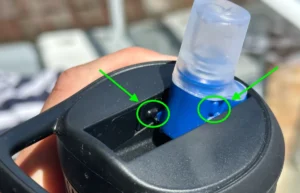There’s nothing quite like a sip of ice-cold water during a particularly grueling hike on a hot summer day.
Not only is cold water thirst-quenching, but studies show that drinking cold water while exercising can keep your body from overheating.
Unfortunately, if you’re an avid outdoor exerciser like myself, you know how fast a bottle of cold water can turn warm with the sun beating down on it. No one, especially not me, likes drinking lukewarm water. It's the worst!
One way to combat this is by putting your Camelbak bottle in the freezer overnight and then grabbing it before heading out for your hike or starting your day. But is this ok or could you potentially break you CamelBak?
Most CamelBak bottles and bladders can do in the freezer, provided you don't fill them more than 2/3 full to allow room for the ice to expand. Stainless steel, glass and Groove CamelBaks should NOT be put in their freezer as the expanding ice could break the bottles or compromise the insulation.
I will admit that a slight learning curve was required when I first began freezing my Camelbak bottles.
But now that I’ve done the trial and error, I can share my findings with you so you can have the coldest water wherever your adventures take you.
Can All Camelbak Bottles Go in the Freezer?
Camelbak has a large line-up of bottles and not all of them are suitable for popping into the freezer. I learned this the hard way, so no one else’s bottles must suffer the same fate as mine.
Plastic CamelBaks
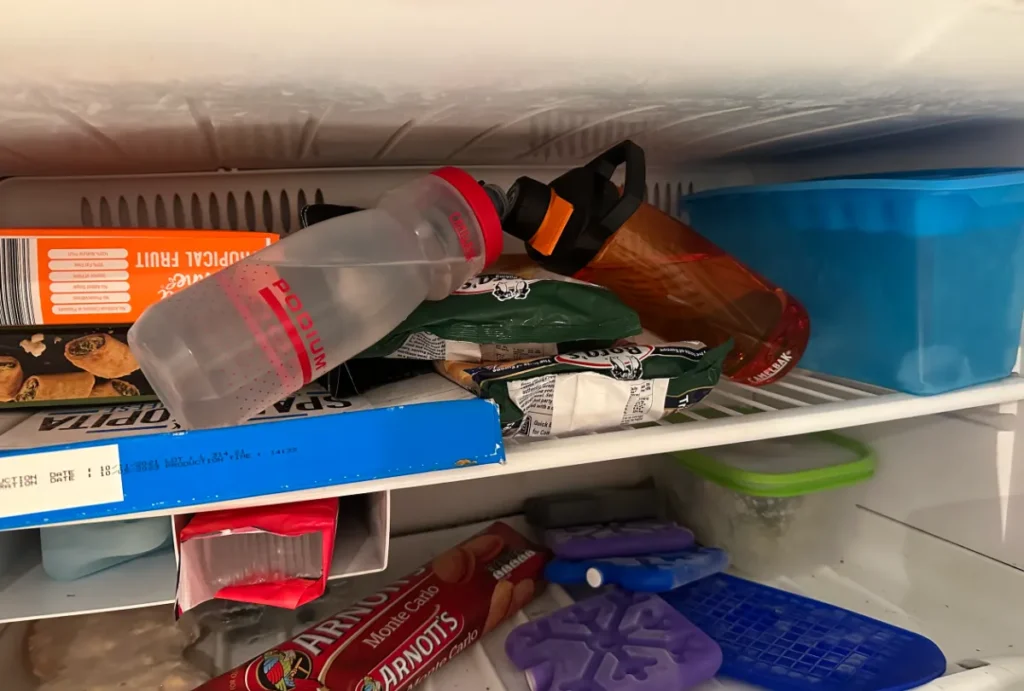
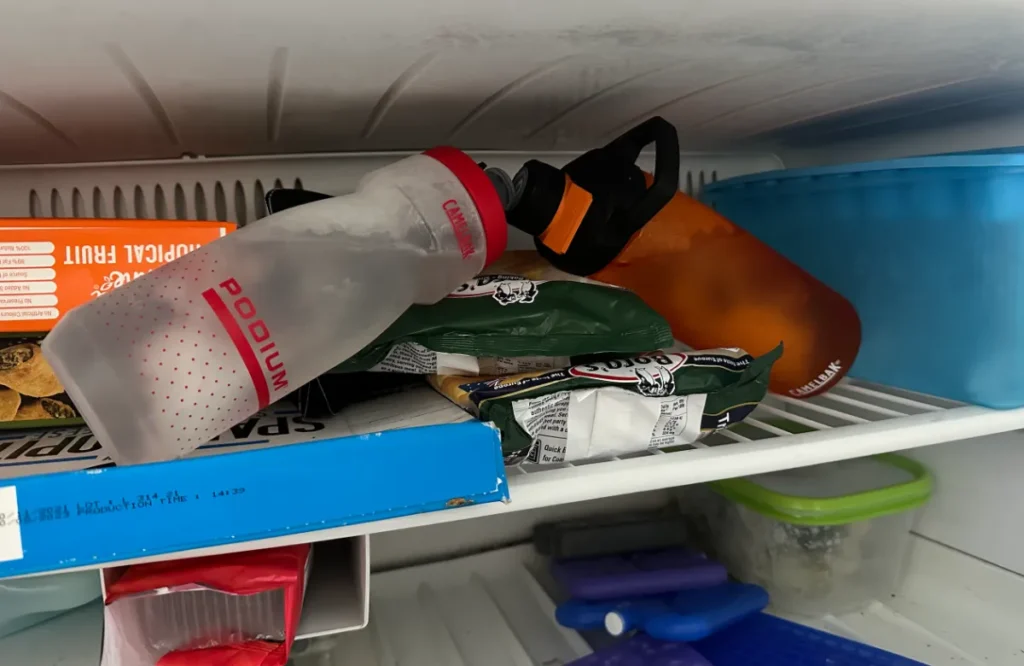
Camelbak’s plastic Chute, Eddy+, and Podium bottles are made of BPA-free tritan plastic and are thus safe to put in the freezer.
As with all bottles you shouldn't fill them up 100% when you put them in the freezer as water expands as it freezes and can apply a lot of pressure to your bottle potentially breaking it.
I personally opt for only filling my CamelBak bottles about 1/2 or 2/3 full with water when putting them in the freezer. I also try to tilt them or put them on their side for optimal freezing and to decrease the risk of the bottle breaking. I haven't had any issues yet.
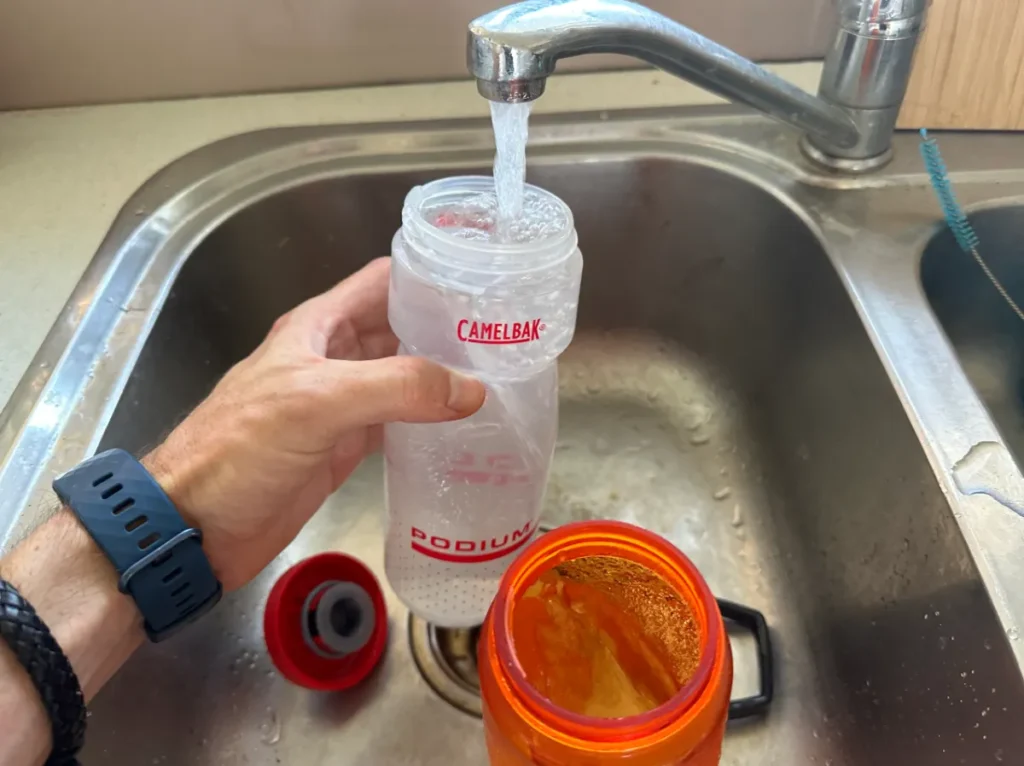
Stainless Steel CamelBaks
On the other hand…the vacuum-insulated stainless steel CamelBaks plus their glass and Groove products are not designed to be in the freezer.
The issue with the stainless steel bottles is that the expanding ice can potentially compromise the vacuum insulation. Your bottle will still work fine and hold water fine but it might not keep water cold for as long and your bottle may begin to sweat.
Because of the vacuum insulation the water freezes from the top down (rather than from all sides) and this causes more pressure to form at the base of the bottle.
To be honest, a lot of people do put their vacuum-insulated stainless steel CamelBaks in the freezer and they are just fine. But there is a slight risk and it's not one I'm willing to take.
It's easier to just put my CamelBak bottle in the fridge or fill it with cold water and ice cubes to make the water cold. In the insulated bottles water will stay ice cold for 24+ hours so there isn't really any need to freeze them.
Glass CamelBaks
Glass CamelBak bottles shouldn't be placed in the fridge as they can potentially shatter from the expanding ice.
CamelBak Groove
CamelBak advises against putting the Groove bottles in the freezer but I'm not exactly sure why.
They are made from the same Tritan plastic that other plastic CamelBak bottles are made from and these are usually fine to put in the freezer.
My guess is that it has something to do with the filter. Maybe the filter will be damaged by the water freezing – especially if there is water in the filter while it's in the freezer.
An alternative is to put your Groove bottle in the freezer without the lid. Leave the lid on the bench. But you may have trouble getting it in the next day as the straw usually touches the bottom and the ice will get in the way.
How Can I Safely Store My Camelbak Bottles in the Freezer?
You should only fill Camelbak’s Chute®, Eddy®, and Podium® bottles ¾ full to allow plenty of space for water to expand as it freezes. If you fill them more than that, your bottle may crack.
I recommend laying your bottles in your freezer at an angle. This ensures the water isn’t touching the cap and the ice isn’t all at the bottom.
Instead, you’ll have a long, thin sheet of ice in your bottle to keep the rest of your water nice and cold on your adventures.
If your bottle has a bite valve, it’s best to remove the cap before putting it into the freezer or just make sure there is no water in the bite valve when you're freezing it.
I made the mistake of not removing mine in the past, and while it didn’t destroy my bottle, I had to wait for the ice in the straw to thaw before I could take a sip of my water.
Not the best discovery to have an hour into a hike on a blistering 95°F/35ºC day.
While Camelbak’s stainless steel, glass, and Groove bottles are not freezer-friendly, you can still fill them with ice cubes to keep your water as cold as possible. I recommend block ice over cubed ice to ensure the water stays as cold as possible for longer.
Can I Freeze My Camelbak Reservoir?
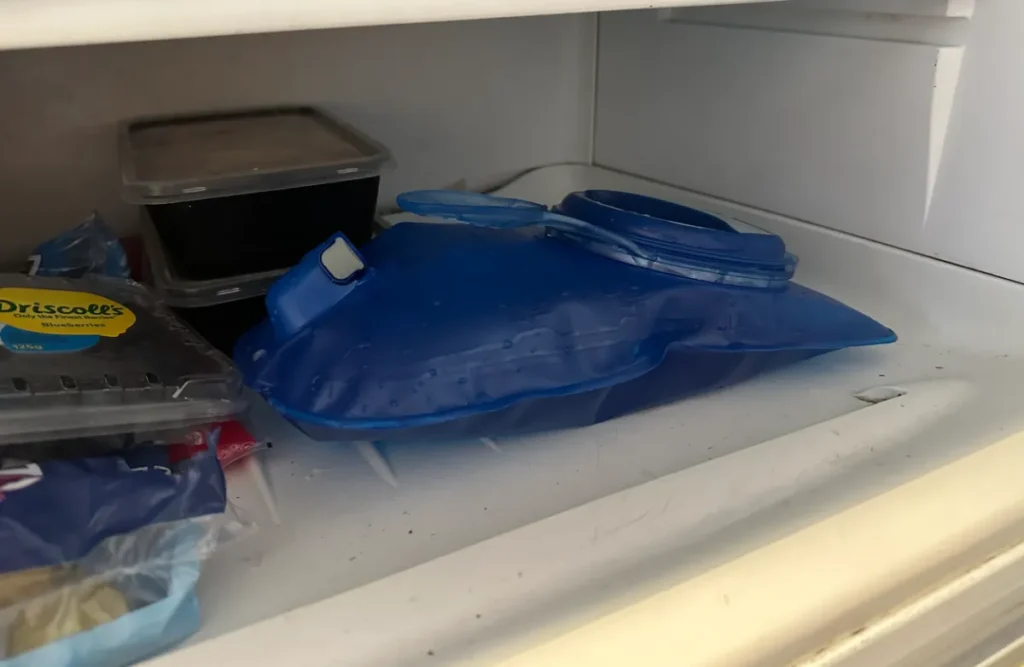
Absolutely. Freezing your reservoir between uses is a great way prevent bacteria growth. It can also be a great way to keep your CamelBak Reservoir cold for longer – so you're not drinking lukewarm water on the trail.
If you're going to freeze your CamelBak bladder I recommend filling your reservoir about 1/3-1/2 full and laying it flat in your freezer the night before a big hike or bike ride. Make sure to lay it on it's back and fill it with air to make filling the rest of your bladder with water easy the next day.
I failed to do this the first time and it make it super difficult to fill up my CamelBak bladder. The lid was sealed shut with ice and the bladder couldn't expand to fit more water in.
Then, in the morning, you will have a long, tall block of ice that will keep your water cooler for longer.




